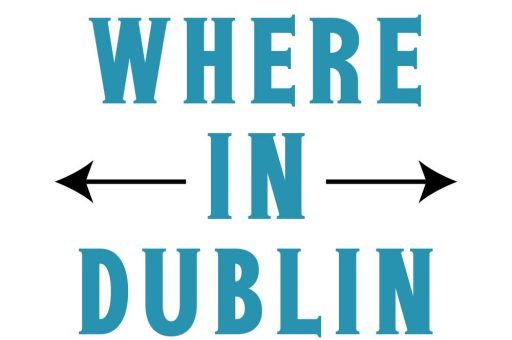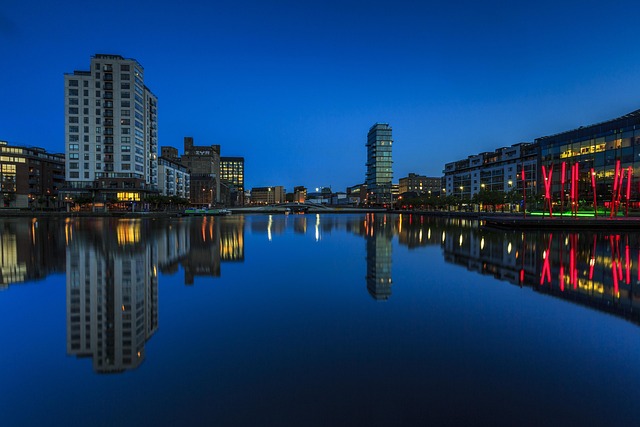Dublin has a way of making history come alive. Every corner, cobblestone, and castle seems to have a story to tell. From Viking invasions to the rise of Irish independence, the city’s museums do more than display artifacts, they let you step into Ireland’s past. But here’s the question every history lover faces when planning a visit: should you go for a private museum tour or a group tour?
Both options have their charm, but they deliver very different experiences. From my own personal experience exploring Dublin’s historic sites, I can tell you that your choice really depends on how you like to connect with history, through quiet, focused storytelling or through shared curiosity and conversation.
Let’s break it all down so you can decide which one suits you best.
Why Dublin Is a Dream for History Lovers
Before diving into private versus group tours, it’s worth pausing to understand why Dublin is such a treasure for anyone fascinated by history.
The city’s timeline stretches back more than a thousand years. You’ll find Viking settlements beneath your feet, Georgian architecture around every turn, and echoes of rebellion in its streets. Dublin’s museums don’t just preserve these eras, they help you relive them.
Some of the most visited museums include:
The National Museum of Ireland, Archaeology, which takes you from prehistoric Ireland to the Viking age.
EPIC The Irish Emigration Museum, a modern and interactive space showing how Irish people shaped the world.
Kilmainham Gaol, once a prison, now a symbol of Ireland’s struggle for freedom.
Dublin Castle, a historical hub that’s witnessed centuries of political and royal drama.
Each museum tells part of Dublin’s long and layered story. Whether you choose a private or group tour affects how deeply you experience those stories.
The Appeal of Private Museum Tours in Dublin
Private museum tours are all about personal attention and flexibility. You get to explore at your own pace, ask as many questions as you like, and dive deep into topics that truly fascinate you.
Here’s what makes private tours stand out:
1. Total Flexibility
With a private tour, you call the shots. You can spend an hour admiring the intricacies of a medieval sword or skip sections that don’t catch your interest. This control over your time makes private tours perfect for those who like to go deep rather than broad.
2. Personalized Experience
Private tours often allow you to tailor your route based on your interests. If you’re obsessed with Irish independence, your guide can focus on artifacts from the 1916 Easter Rising. If you’re more drawn to ancient Irish mythology, they’ll spend more time in those areas.
That personal touch changes everything. From my own personal experience, having a guide adjust the pace and content around what intrigued me most made the stories feel alive and meaningful. It’s like having history told directly to you, rather than overhearing it in a crowd.
3. Quiet and Focused Environment
In private settings, you don’t have to compete for the guide’s attention or strain to hear them speak. There’s no rushing to keep up with others or waiting while someone else asks about something you’re not interested in.
For history lovers who appreciate silence and detail, especially in places like Kilmainham Gaol or Dublin Castle — this kind of quiet focus can make the experience feel more immersive.
4. Ideal for Photography and Reflection
If you love to take photos or notes, private tours give you space to do that without feeling pressured to move on. You can linger in front of exhibits, soak in the atmosphere, and really think about what you’re seeing.
This is especially rewarding in Dublin’s older museums, where the lighting, architecture, and mood often feel like part of the exhibit itself.
5. Great for Special Interests
Private tours are perfect for those who have niche interests — maybe you’re fascinated by Irish manuscripts, the Celtic revival, or the Viking settlements. A private guide can craft a narrative that fits exactly what you love most about history.
The Downsides of Private Tours
Even with all those advantages, private tours aren’t for everyone.
1. Higher Cost
The biggest drawback is the price. Private tours can cost significantly more than group options. If you’re traveling on a budget, that extra cost might not feel worth it, especially when many of Dublin’s museums already offer excellent public tours at low or no cost.
2. Less Social Interaction
If you enjoy chatting with other history lovers or hearing different perspectives, private tours might feel a bit isolating. Group tours often create opportunities for shared discussion and excitement that private ones lack.
3. Responsibility for the Pace
While flexibility is nice, it can also backfire. If you’re not sure how much time to spend at each section, you might end up rushing or lingering too long. In a group, the guide manages the timing for everyone, which helps maintain flow.
The Experience of Group Museum Tours in Dublin
Group tours are the classic choice, lively, structured, and social. You’ll often join a small to medium-sized group led by a knowledgeable guide who takes everyone through key exhibits in a set timeframe.
Here’s what makes them appealing:
1. Great Value for Money
Group tours are far more affordable. Many of Dublin’s museums, like the National Museum or EPIC, include group tours in the ticket price or charge a minimal extra fee. You get expert guidance without stretching your budget.
2. Social and Interactive
If you enjoy meeting new people, group tours can be energizing. You get to exchange impressions, listen to others’ questions, and share that collective sense of curiosity.
For travelers who thrive on connection and shared learning, this is a big plus. Sometimes, another person’s question sparks a new insight or leads the guide to share a story you might have missed on your own.
3. Structured and Time-Efficient
Group tours typically follow a fixed route and schedule. That structure ensures you see the main highlights within a set period, usually an hour or so.
This is great for visitors with limited time or those who prefer not to plan every detail. The guide takes care of pacing, transitions, and key storytelling points.
4. Guides with Proven Expertise
In Dublin, group tours are often led by professional historians or local experts trained to bring history to life. Their storytelling style is polished, entertaining, and full of little anecdotes that make you appreciate the exhibits more.
Even though you’re sharing their attention, their passion and knowledge still shine through.
The Drawbacks of Group Tours
Group tours can be enjoyable, but they come with trade-offs.
1. Limited Personal Attention
With many people in one group, it’s harder to get personalized answers or dive deep into specific topics. If you’re the kind who loves asking detailed questions, this can be frustrating.
2. Background Noise and Distractions
You might struggle to hear the guide in crowded areas, or you could be distracted by other visitors. Larger museums, especially during peak tourist season, can get noisy.
3. Fixed Schedule
You can’t slow down or speed up the tour. If you find a particular exhibit fascinating, you’ll have to move on when the group does.
4. Less Flexibility for Photos
Because the group is on a schedule, you can’t always stop for long to take photos or notes. This can make it harder to capture the details that interest you most.
Comparing the Two: Private vs. Group
Now that we’ve looked at both sides, let’s compare them point by point:
| Feature | Private Tour | Group Tour |
|---|---|---|
| Price | Higher | Lower |
| Personalization | High | Limited |
| Social Interaction | Low | High |
| Flexibility | Complete control | Fixed schedule |
| Pace | You decide | Guide decides |
| Depth of Learning | Deep and focused | Broad and general |
| Best For | History enthusiasts, researchers, quiet travelers | Social visitors, budget travelers, first-time museum-goers |
Which Is Better for History Lovers?
This really depends on what kind of history lover you are.
If you’re passionate about specific eras or topics, like the Irish Revolution, the Viking legacy, or ancient Celtic art, a private tour lets you explore those interests in depth. You’ll walk away feeling enriched and personally connected to what you saw.
If, however, you enjoy soaking in the general atmosphere, meeting fellow travelers, and hearing diverse perspectives, a group tour might be your best choice. You’ll get a strong overview of Irish history in a more social setting.
Based on my overall experience, I’d say private tours are the best option for serious history lovers, those who crave detail and connection to the past. But for casual learners or first-time visitors, group tours provide a fun, engaging introduction without overwhelming you.
Tips for Making the Most of Either Tour
1. Do a Little Reading Beforehand
Knowing the basic timeline of Irish history helps you follow along better. You’ll recognize references and appreciate the context behind the artifacts.
2. Ask Questions
Whether you’re in a group or private tour, engage your guide. Dublin guides love sharing knowledge — it’s what they do best.
3. Take Notes or Photos
A quick photo or jotting down a fact can help you remember details later. Many museums allow photography (without flash), but always check the rules first.
4. Visit Multiple Museums
Don’t limit yourself to just one site. Each museum in Dublin offers a different angle on Irish history. EPIC tells stories of emigration, while Kilmainham Gaol reveals the human side of political struggle.
5. Combine Both Types of Tours
If time and budget allow, try both. Start with a group tour to get the overview, then book a private one later for deeper exploration. It’s a great way to balance structure and freedom.
Final Thoughts
Dublin’s museums offer endless opportunities to explore history, whether through intimate private tours or lively group ones. Both have their perks, and both bring Ireland’s past to life in their own way.
If you crave depth, privacy, and focused storytelling, go private. If you love conversation, energy, and shared discovery, go group.
Either way, you’ll walk away with more than just facts, you’ll leave with stories, feelings, and a deeper appreciation for Dublin’s unique place in history.
History in Dublin isn’t just told. It’s felt. And whichever path you choose, it’s going to leave an impression that stays with you long after you’ve left the museum doors behind.


